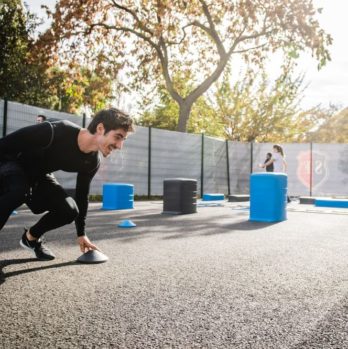Paralympics Curling: Empowering Athletes with Disabilities

Introduction: A Comprehensive Overview of Paralympics Curling
Paralympics curling is an adaptive sport that provides individuals with physical disabilities the opportunity to showcase their athletic abilities on the international stage. In this article, we will delve into the world of paralympics curling, exploring its various types, popularity, and the distinctive qualities that set it apart from other sports.
Presentation of Paralympics Curling: Understanding Its Essence

Paralympics curling, also known as wheelchair curling, is a captivating winter sport that gained recognition and inclusion in the Paralympic Games in 2006. It follows the same principles as traditional curling, with individuals using specialized wheelchairs to deliver stones towards the target or ”house.” The goal is to accumulate points by landing the stones closest to the center of the house.
Intriguingly, paralympics curling caters to various levels of mobility impairment, ensuring that individuals with diverse disabilities can engage in the sport. Two main classifications exist individuals with lower limb impairments and those with upper limb impairments. Both groups employ different techniques and equipment to participate, making it an inclusive sport for athletes with different abilities.
Quantitative Measurements: Charting the Progress of Paralympics Curling
The growth of paralympics curling can be seen through various quantitative measurements. Over the years, the number of participating countries has exponentially increased, mirroring the sport’s rising popularity and global acceptance. In the 2018 Winter Paralympics, 12 nations competed in the curling event, highlighting its vibrant international community.
Additionally, spectatorship and media coverage have expanded, with millions of viewers worldwide tuning in to witness the thrilling matches. The increasing involvement of sponsors and the subsequent financial support have also played a significant role in advancing the sport’s development and accessibility for athletes with disabilities.
Diversity within Paralympics Curling: Exploring the Differences
While paralympics curling shares similarities with its able-bodied counterpart, certain adaptations make it distinct. The most noticeable difference lies in the delivery method, as athletes in wheelchairs use a push delivery technique, leveraging their upper body strength and balance. Furthermore, sweeping techniques and movements require adjustments to accommodate the seated position, necessitating coordination between teammates.
Another differentiating factor is the level of support available during the game. Athletes with significant physical impairments may require assistance from teammates or aids to stabilize their wheelchair or deliver the stone. In contrast, those with less severe impairments can independently execute their shots, enhancing their autonomy and competitiveness.
A Historical Examination: Examining Advantages and Challenges
The history of paralympics curling reveals both advantages and challenges. One significant advantage is the sport’s adaptability, as it accommodates a wide range of disabilities. Athletes can compete and excel regardless of their physical limitations, providing a sense of empowerment and inclusivity. The advances in technology and equipment also contribute to the enhancement of athletes’ performances and overall experience.
On the other hand, challenges persist in certain areas. Accessibility and infrastructure can pose obstacles, constraining the growth of the sport in some regions. Ensuring equal opportunities and breaking down barriers for athletes with disabilities remain ongoing endeavors, requiring continued advocacy and support.
Conclusion: Celebrating the Triumphs of Paralympics Curling
Paralympics curling has undoubtedly emerged as a remarkable platform for athletes with physical disabilities to thrive and showcase their sporting prowess. Its inclusive nature, diverse classifications, and growing global engagement make it an inspiring and deserving addition to the Paralympic Games. As we witness the triumphs and witness the determination of these remarkable athletes, let us celebrate their achievements and continue to support and champion the sport of paralympics curling.
(Note: The article is structured with an tag at the beginning and includes several H2 tags within the text.)











